How could a grand and thoughtful plan like Tomorrowland 2055 fall apart? The same way so many Walt Disney Company projects in the 1990s did: Disneyland Paris.
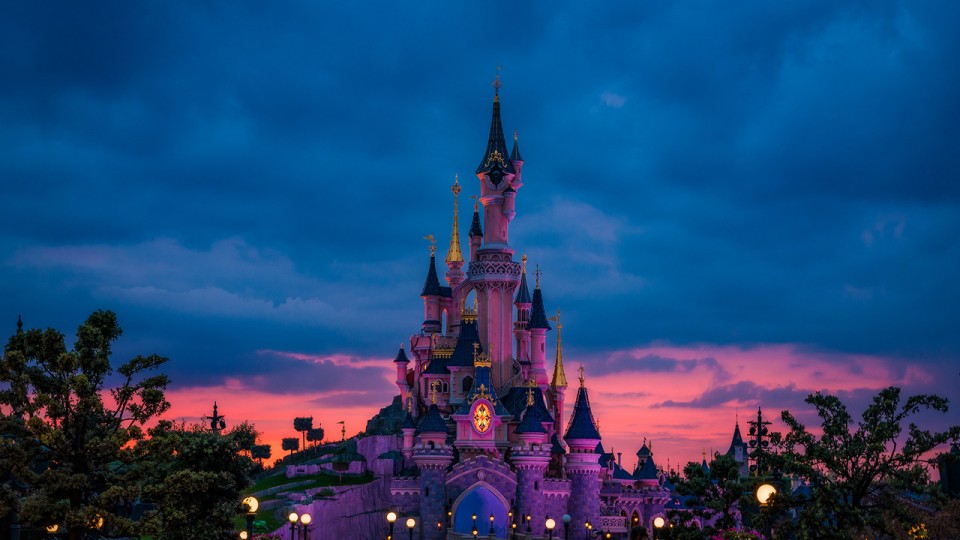
Meant to be Michael Eisner’s magnum opus and legacy-defining expansion, immense funding was flooded into the Parisian park. That’s precisely why ambitious, ultra-detailed reimaginings like Discoveryland could exist. In fact, Disneyland Paris is still often recognized today as the most beautiful Disneyland-style park on Earth, somehow managing to retain the charm and storybook coziness of Disneyland with the scale and grandeur of Magic Kingdom.
But from the start, cultural conflicts made Disneyland Paris a monumental stumble. The resort opened to resounding financial losses so vast, Michael Eisner famously swore off any more large scale projects. That’s why the decades after Disneyland Paris are marked by cancellations, cop-outs, and closures across the company, producing low-budget projects and pulsing cartoon characters into the parks wherever possible.
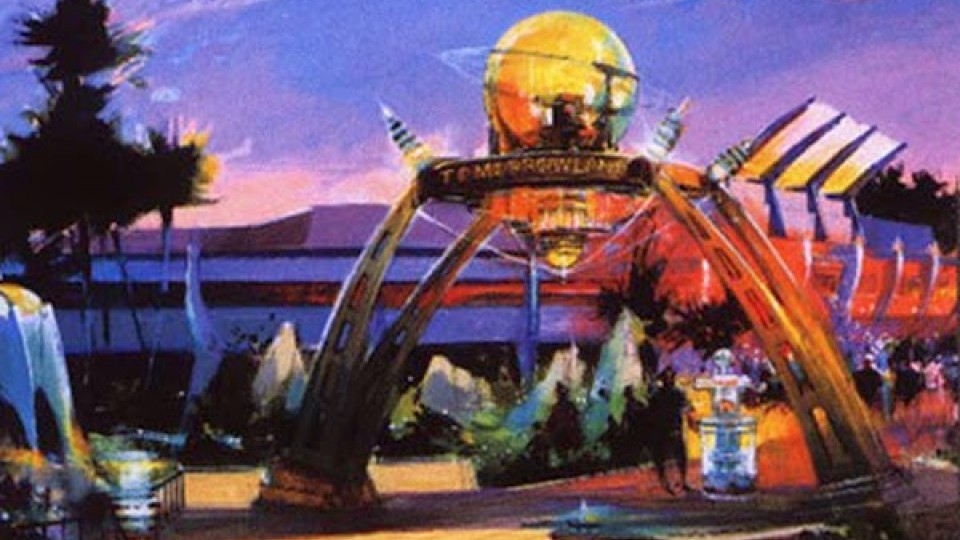
On the chopping block were the two new Tomorrowlands designated for Orlando and California.
But because capital expenditures for Orlando’s land had already been approved and allotted, Imagineers got word that the attractions they were developing for Disneyland would instead be installed in Florida. Construction pressed forward in Orlando, yielding at least one ambitious land to arise as the finale of Eisner’s big budget “Ride the Movies” era.
1994: New Tomorrowland (Florida)
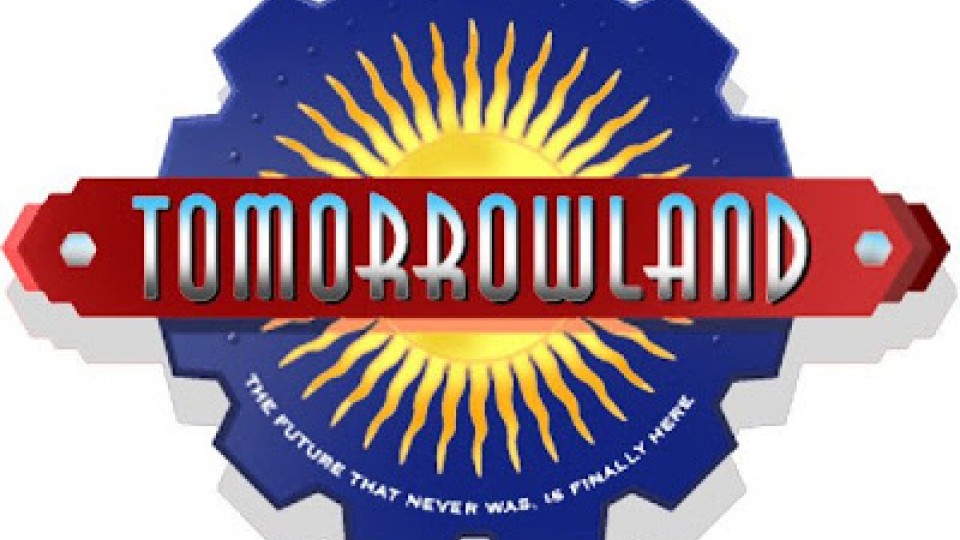
Location: Magic Kingdom Lifetime: 1994 – Present
Magic Kingdom’s New Tomorrowland opened more or less on schedule, in 1994. The radical design was indeed a smart and timeless one. The sleek, simple, geometric 1970s look had been entirely replaced by a bustling and detailed metropolis of the future. However, rather than being a glimpse into the potential scientific wonders of tomorrow, this Tomorrowland is all science-fiction: a world of landed spacecrafts, pink and blue neon signs written in extraterrestrial languages, metallic fins, and intermingling alien cultures.
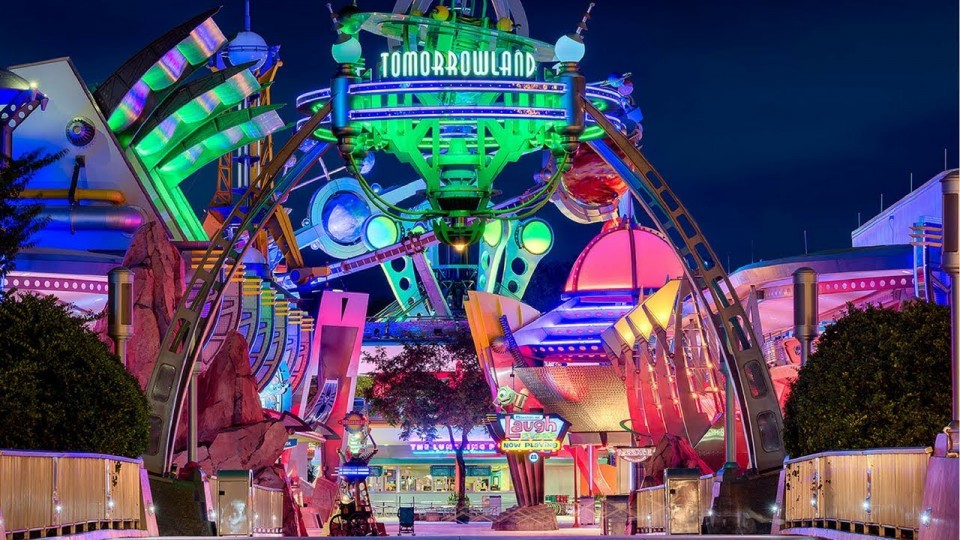
If Paris’ Discoveryland is the future as envisioned by 1800s literary figures like Jules Verne and H.G. Wells, then Orlando’s Tomorrowland is the future as envisioned by early 20th century pulp comic books like Flash Gordon and Buck Rogers – a neon intergalactic alien spaceport.
Most brilliantly, Orlando’s Tomorrowland (originally) operated in one seamless continuity. New attractions (and repurposed old ones) were all written as interconnected elements of a functioning galactic spaceport, with each attraction taking place logically within the city.
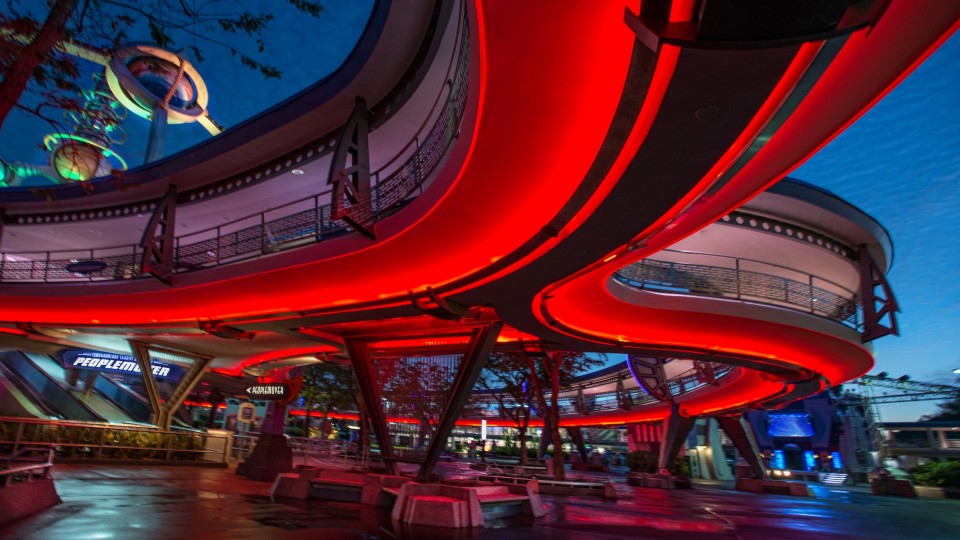
For example, the Tomorrowland Transit Authority “acted” as the city’s public mass transit (with riders on the “Blue Line,” but overhead announcements and false track extensions building out the universe by referred to a “Red Line” and “Green Line” that didn’t actually exist.)
Aboard that “real” public transportation system for residents, tourists, and commuters in town, an on-board narrator would point out the Tomorrowland Interplanetary Convention Center, currently hosting a Martian company called X-S Tech as it displays its new teleportation technology (that’s Alien Encounter), the Tomorrowland Metropolitan Science Center (The Timekeeper), the city’s Intergalactic Space Port 77 (Space Mountain), a Light & Power Company (a cleverly disguised arcade)…
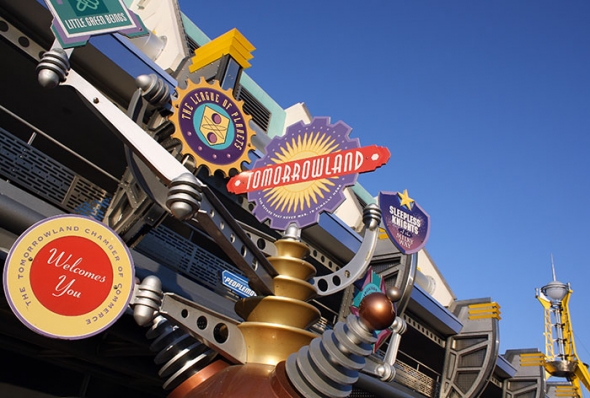
There’s even a quick service restaurant cast as an intergalactic nightclub with an otherworldly alien playing at the piano for diners to enjoy. All of these pieces and parts united Tomorrowland’s attractions, restaurants, and even shops into one single, overarching story and style… Just like Frontierland or Adventureland or Fantasyland, Tomorrowland was not just a conceptual place, but a habitable one… a very smart idea indeed.
Elsewhere…
Florida’s New Tomorrowland had narrowly avoided getting the budgetary axe since it was already well into construction when Eisner put the stop-order on new projects. That meant that Magic Kingdom still got a New Tomorrowland, and it wasn’t half bad, either.
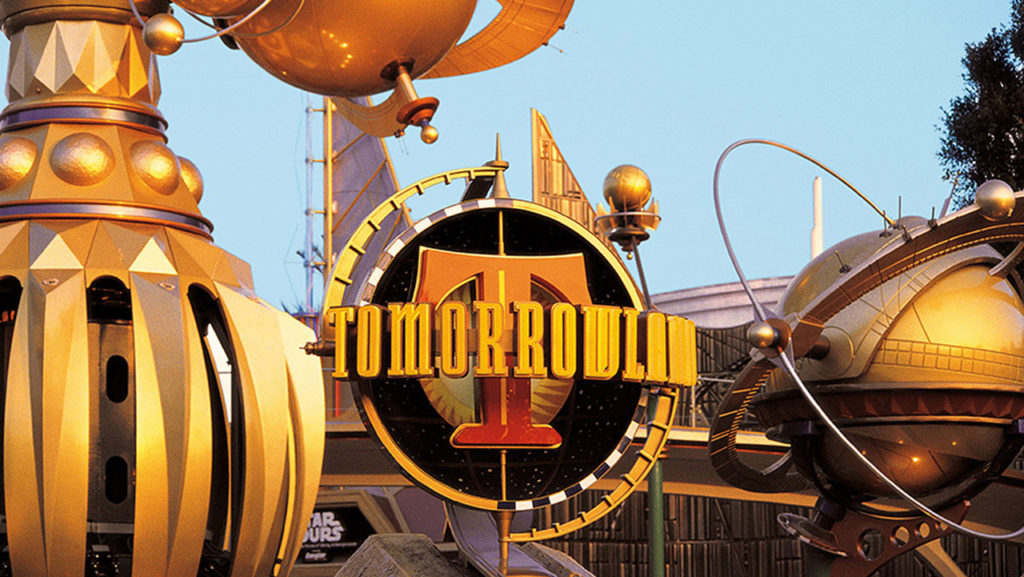
As for what happened to Disneyland’s Tomorrowland? Well, post-Disneyland Paris, Eisner’s orders that large scale projects disappear stayed true. Disneyland still needed a new Tomorrowland, but now designers were tasked with spending as little money as possible to reinvigorate the land and give it a timeless makeover. Tony Baxter was again put in charge, but this time with none of the Blue Sky benefits. With practically no money, Disneyland got exactly what executives asked for: a disaster. See what they created on the next page…



Solarpunk! – lots of sleek white/glass with a bit too much greenery + plus an ecological message is quite timeless.